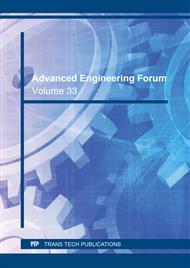p.1
p.11
p.19
p.33
p.47
Water Quality Assessment in the Mining and Industrial Region on the Example of Karachunovskyi Reservoir in Ukraine
Abstract:
Quality of water from surface water source – Karachunovskyi reservoir for a long period of observation during (1965-1979), (1980-1990), (1991-2001), (2002-2012) years was studied. In water taken from Karachunovskyi reservoir was shown negative trend for increasing salt composition, by the content of general rigidity, dry residue, sulfates, chlorides for a long period of observation: from 1965 to 2012 years, which is caused by the systematic discharge of a highly mineralized mine water from the mining enterprises of Kryvyi Rih into Ingulets and Saksagan rivers, and subsequent pollution of Karachunovskyi reservoir – the main source of centralized drinking water supply 94% of the urban population. Generally, salt composition of the water from Karachunovskyi reservoir in some years of observation belonged to the 4th class of danger, i.e. "limited usable, undesirable quality". Characteristic feature of the Kryvorozhska urbanization zone is the presence of priority heavy metals (Mo, Mg, Cd, Ni, Zn, Fe, Cu, Pb, Cr) in water sources, due to the intensive extraction of iron ore. For example, average iron content in 2010 was (0.342±0.003) mg/dm3, which exceeded MPC (0.3 mg/dm3) on 1.14 times. The average content of manganese exceeded the hygienic standard in 2008 (1.42 MPC), in 2009 (1.3 MPC) and in 2010 (1.54 MPC) years, due to a high background content of this chemical element in the environmental facilities of the industrial city, and the annual discharge of highly mineralized mine water into local water sources.
Info:
Periodical:
Pages:
19-31
Citation:
Online since:
August 2019
Authors:
Price:
Сopyright:
© 2019 Trans Tech Publications Ltd. All Rights Reserved
Share:
Citation:


